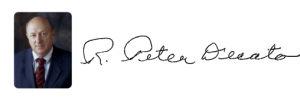How to Analyze a Court Case
Every day a lawyer has to analyze a potential court case. They do this analysis because they eventually have to dispose of the case in some fashion whether it be at trial or by negotiation. To get the best disposition, the lawyer has to think about a number of things. I want to write about what lawyers think about or should think about as they do this analysis.
The first thing to analyze are the elements of proof (what things need to be proved to make out a claim and/or a defense). For example, in a negligence case, we are dealing with 4 elements: duty, breach, causation and damage. In a DUI case, we are dealing with driving, motor vehicle, public way, under the influence, and intoxicating liquor or drugs. Every civil case, every family case and every criminal case can be reduced to those 2, 3, 4 or more things that need to be proved to make out a case or a defense. Think of it like diagraming a sentence (noun, verb and object).
We then need to look critically at the evidence. What does the evidence say about the various elements of proof? What will the witnesses say about the elements? What do the documents say about the elements? Finally, what does the physical evidence say about the elements?
Next, we need to identify the legal and factual theories of the case. What is our story? What is our opponent’s story?
Finally, we need to determine what constitutes an outcome lever in this case. This can include a piece of evidence. It can also include a psychological reality, a feeling, a current event, a cultural phenomenon. It can include any other factor that is capable of turning the case to one side or the other. What drives the case? This thought process encourages us to think outside the box. This where we get creative because we start thinking beyond the evidence.
It is wise to make a chart of every outcome lever and then to determine how to minimize or maximize those levers. That can be done by investigation; by continuing with case analysis; by filing pretrial motions; by arranging for expert testimony; by preparing to cross-examine opposing witnesses; by preparing witnesses to testify; by preparing a witness’s appearance and demeanor in court and by preparing well founded objections.
We then choose a theory of the case. The trial after all is like a play, complete with protagonists and antagonists. We need to develop one or more themes (principles that run throughout the evidence). This is the glue that holds things together.
One final thought – watch out for “trapdoors” and “rabbit trails!” Stick to the plan – your plan. Don’t let the opposition unnecessary distract you. Stay focused and bring the good result home!

